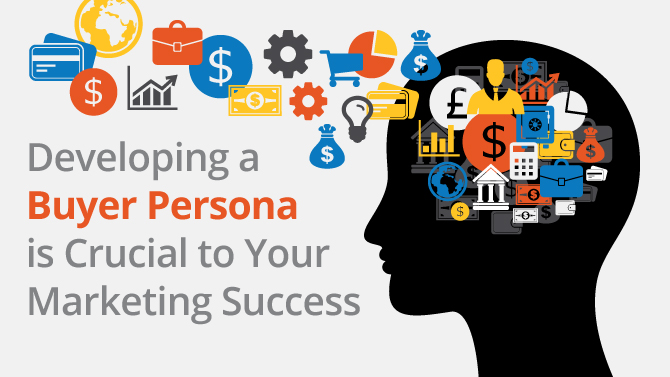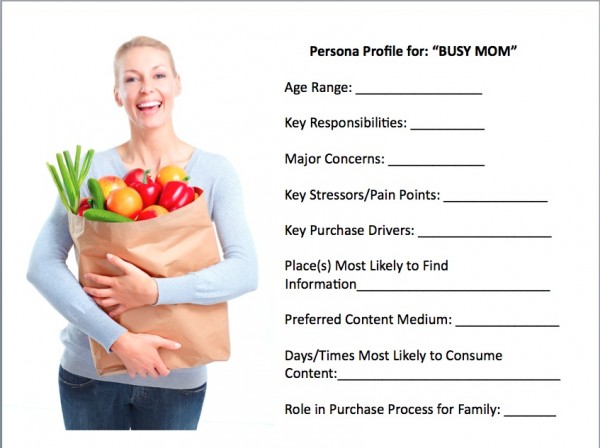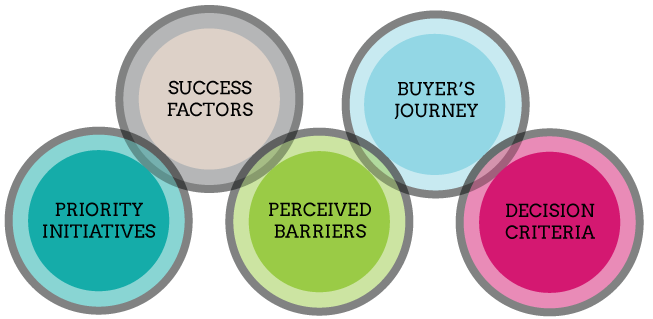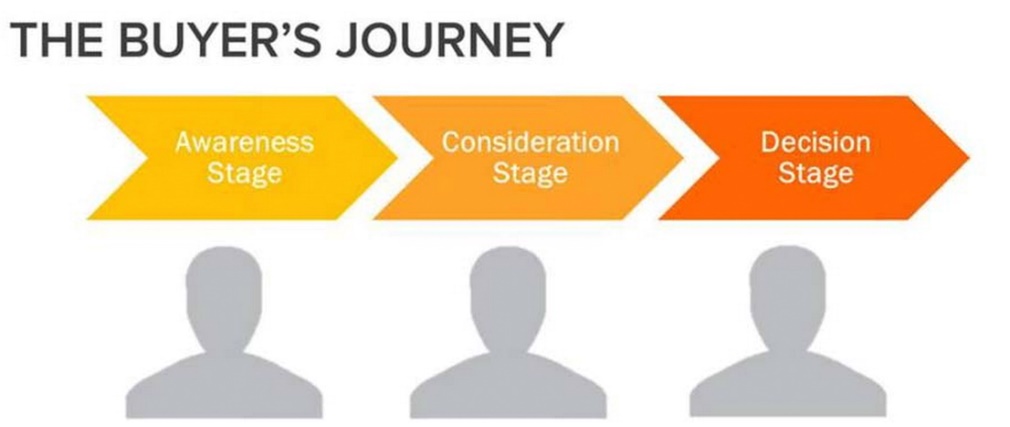Better quality leads and customers. We decode the secret clues to building Buyer Personas.
61% of global internet users research products online and are 57% of the way through the purchase decision before engaging a sales representative (Interconnected World: Shopping and Personal Finance).
Now that customers are choosing how they engage with your sales and marketing, you need to discover and apply customer insight. You can gain these insights by creating buyer personas.
Users are frequently looking to be educated and informed. They want to feel like your site has been created especially for them. Prospects are thinking:
“Tell me what I want to know and help me find the right option at every stage of my buying decision, or I’ll go somewhere else”.
You need to understand your buyers’ goals, needs, and objections.
This article will show you why buyer personas are important for generating better quality leads and customers.

What is a Buyer Persona?
Buyer personas are essentially a representative of the type of buyer you have identified as having a specific interest in your organisation or product. (David Meerman Scott, New Rules and Marketing and PR).
Buyer personas are not about demographics.
A well-designed persona reveals insight into how buyers buy and how you can reach this type of buyer with relevant, timely information.
No longer can you rely on internal stakeholders’ opinions of what needs to be communicated to buyers without first knowing if it would resonate with your buyers.
Buyer personas allow you to better understand the needs and wants of your customers. This allows to do a more efficient job of appealing to those specific desires.
As you know, lead generation requires the tailoring of your marketing efforts toward the right people; buyer personas are a crucial tool in this.
You can use buyer personas to revitalise existing products, as well as coming up with problems and challenges in the marketplace that are not being adequately addressed.
Why are Buyer Personas so Important?
According to Adele Revella, author of Buyer Personas, “marketers must understand how markets full of buyers navigate the buying decision they want to influence so that they can become a useful, trusted resource throughout the decision. Marketers need to become good listeners if they want to be effective communicators”, p.6.
With the world changing so quickly you are in positions now where you are selling to people you’ve never sold to before. The way customers want to connect with you is changing.
You might not know your customers any longer. You may not know how to talk to them or where to have a conversation.

Buyer personas help you understand your customers better. This makes it easier for you to tailor your messages, content, products and services to their specific needs, behaviours and concerns.
Buyer Personas:
- Attract and retain more of the right type of customers.
- Buyer personas are tools that will help you engage with your customers.
- Having a buyer persona will make you a better and more effective marketer.
- User-driven design: You focus on what the user needs.
Buyer personas are incredibly important for market segmentation. They allow you to segment your customers into different groups.
Knowing the different motivations and purchasing habits of your customers will allow you to target different groups appropriately.
Buyer persona research will ensure that your market uses the voice of your buyers. It is essential that you invest in proper keyword research to make sure you speak their language.
This builds a bond of trust with your buyers that leads them into the buying process. Buyer personas grant you the ability to effectively focus on understanding your buyers’ expectations, so that you can create and market what your buyers are seeking.
How to Create Buyer Personas?
Asking probing questions and carefully listening to your customers’ responses lie at the core of creating buyer personas. The best way to gain deep insight into the mind-set of your buyers is to spend quality time with them.
Building Buyer Personas
By far the most effective way to build buyer personas is to interview buyers who have previously made a decision similar to the one you want to influence.
Effective persona interviews encourage your buyers to tell you their story, of what worked and what didn’t work, as they progressed through their buying decision.
You’ll find that the buyer will speak 90% of the time, and, if you guide them with the right type of questioning, you will learn the words they use and you’ll know how your buyers make the decision to buy or not buy your product.
You should also be interviewing the people not buying from you, as these are the people you’ll want to more effectively engage and sell to in future.
If you don’t have time to interview, use a questionnaire. Some free online survey and questionnaire services include SurveyMonkey, SurveyMoz and FluidSurveys.
Focus on the following topics when creating your interview questions:
- Background: Basic details about your ideal customer.
- Job details: Title, key responsibilities and time in the job.
- Attitudes: Likes and dislikes, motivations and career aspirations.
- Main source of information: Where your buyer does their product/service research.
- Goals: Persona’s primary and secondary goals.
- Pain points: Their challenges and fears, frustrations, pressures and concerns.
- Relative to purchasing what you offer: What their role in the buying process is; what problem or desires they are solving; what rewards they are associating with the purchase.
- What is their buying process: What criteria they use in their decision process; what messages speak to them.
The 5 Rings of Insight
Buyer’s insight describes a customer’s decision to purchase a product or service.
1. Priority initiatives: The most compelling reason that buyers decide to invest in a solution similar to the one your organisation offers. Their personal and organisational circumstances. E.g. Need to compete for work promotion.
2. Success factors: Operational or personal results that your buyer persona expects from purchasing a solution like yours. E.g. Impressing peers.
3. Perceived barriers: What prevents buyers from considering your solution? E.g. Prior experience with company was unpleasant.
4. Buyer’s journey: What they did to arrive at their conclusion. You will use the buyer’s journey insight to align your sales and marketing activities to target the most influential buyers at each phase of the decision.
5. Decision criteria: The specific attributes of your product, service, or solution that buyers evaluate as they compare alternative approaches.
Mapping to Buyer Personas and Journey
Now that you’ve defined your personas, you need to create a buying journey that will convert these personas into customers. Create a map of your buying process steps, which persona is involved in each step, and the key rings of insight for each.
This leads to personas you can directly link to messaging platforms, brand strategies and sales tactics.
Understanding the participation of each persona at each stage is the first step in developing your buyer journey map.
For the best results, you should evaluate each buyer persona’s activities and needs throughout the decision-making process. This will guide you to impact their decision-making process.
An example of a typical buyer’s journey, where there is a long considerations cycle:
- Early stage: Not in the market yet. These buyers are looking for educational, entertaining content. Your job is to present that content while building awareness and trust.
- Mid-stage: Your buyers are aware of your brand, and are more actively researching your product. Present more specific content, designed to keep buyers engaged.
- Late stage: Buyers are close to making a purchasing decision. Create content that directly speaks to your offering and the benefits you bring, differentiate yourself from the competition.
Visualise your Buyer Personas
Content Marketing Institute (CMI) suggests you add images and name your personas to help people relate to their profiles.
 Image credit: Bigstock
Image credit: Bigstock
Seeing these personas as you work will remind you that not all audience members are alike; and that each persona can be affected by changes that will impact the journey and content you deliver to them.
Remember to document your persona, and share it with everybody on your team.
How Many Buyer Personas Should I Have?
This depends on the number of distinct audiences you intend to target.
Adele Revella explains that you can use one persona to create marketing strategies and content that will meet the needs of several audiences. This is most effective if their decision criteria or insights are primarily the same.
Conclusion
Buyer personas are becoming increasingly important as organisations are fighting to get their message heard in a crowded market. Buyer personas help your marketing come alive.
Use it. Share it with your team members and employees. Keep it updated as the marketplace changes. Have fun with it.
Are buyer personas important to your business? What have we missed? Let us know in the comments below.
Discover
The 12 Marketing Secrets of Fast-Growth Companies
Find out what they do to achieve outrageous business success

Get your free copy

 By
By 


This is an informative article. I believe that in order to succeed in this marketing persona strategy, you’ll need decisiveness and persuasiveness.